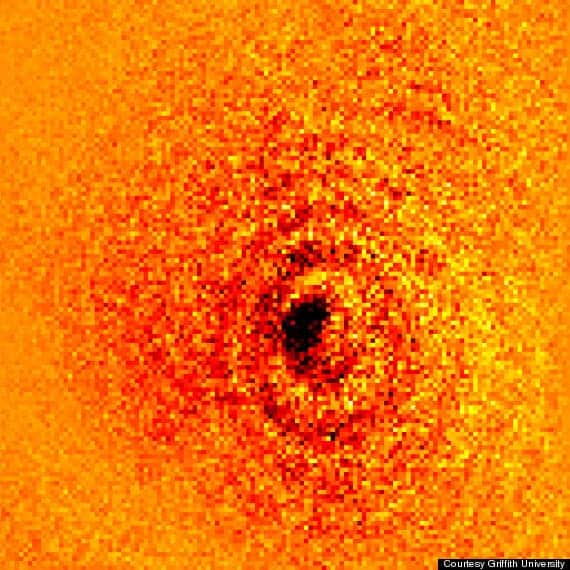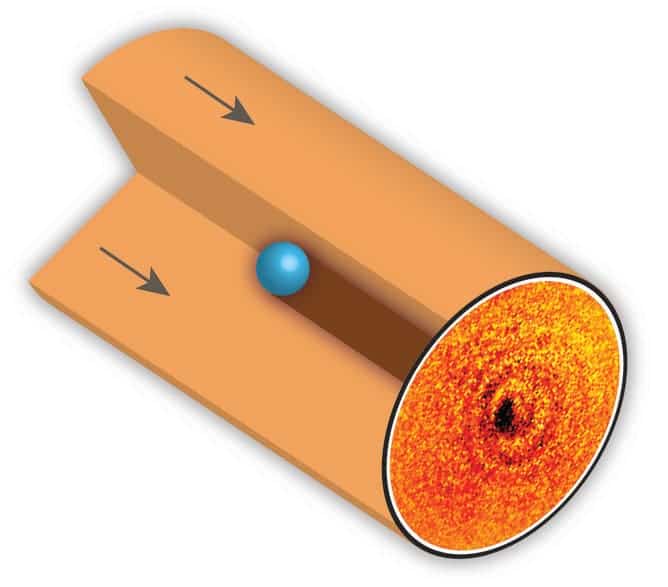
For the first time ever the shadow of an atom (yes, even an atom can cast a shadow) has been imaged using a complex technique which involved a laser beam and a a Fresnel lens. The culmination of their five-year work is this fantastic snapshot from above, and although this dark spot is quite tiny, the implications of the research in quantum physics are quite sensible.
The scientists at Griffith University lead by Erik Streed, a physics lecturer at the university, went on a quest to find out which was the smallest thing that could cast a shadow. A laser beam was carefully fired at a single Ytterbium atom – a chemical element capable of absorbing the right kind of colours to serve the scientists’ interests – suspended in empty space which cast a shadow. Then using an ultra hi-res miscroscope based on a Fresnel lens, a fundamental optics instrument that focuses light much in the same manner to a lighthouse lens, the scientists were able to produce high-resolution images of the atom and its shadow.
“By using the ultra hi-res microscope we were able to concentrate the image down to a smaller area than has been achieved before, creating a darker image which is easier to see,” Dave Kielpinski, a professor at the Centre for Quantum Dynamics at Griffith University, said in a written statement.

A tiny dark dot with huge implications
The size of the shadow is set by the wavelength of light, which is about a thousand times larger than the actual atom. Since atoms have well understood light absorption properties, predictions can be made about the depth of a shadow cast, improving communication between the individual atoms performing calculations. Too much light or X-ray damages living tissues and biological samples, hampering research and health. By predicting how much light is needed to observe processes within cells by projecting the shadow, scientists can safely study without breaching the threshold.
Findings were published in a July edition of the journal Nature Communications.
via The Conversation





